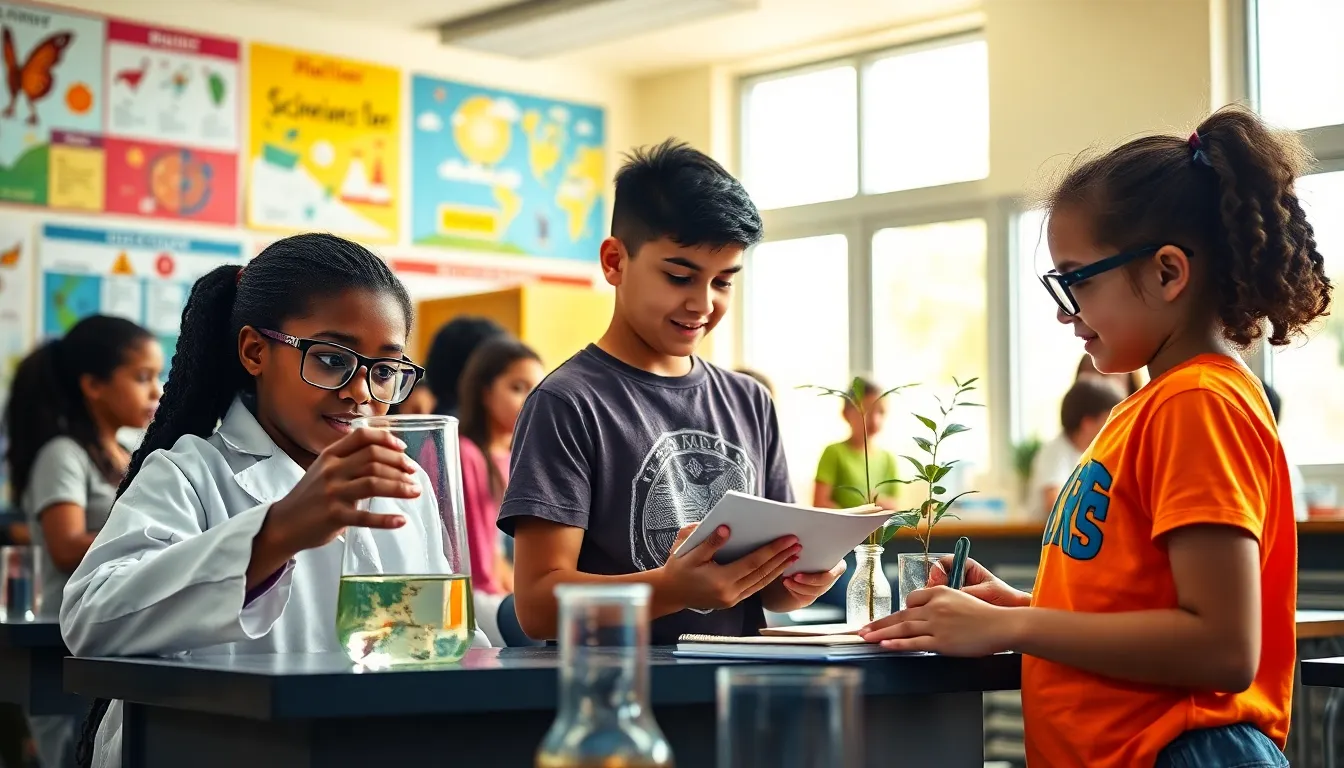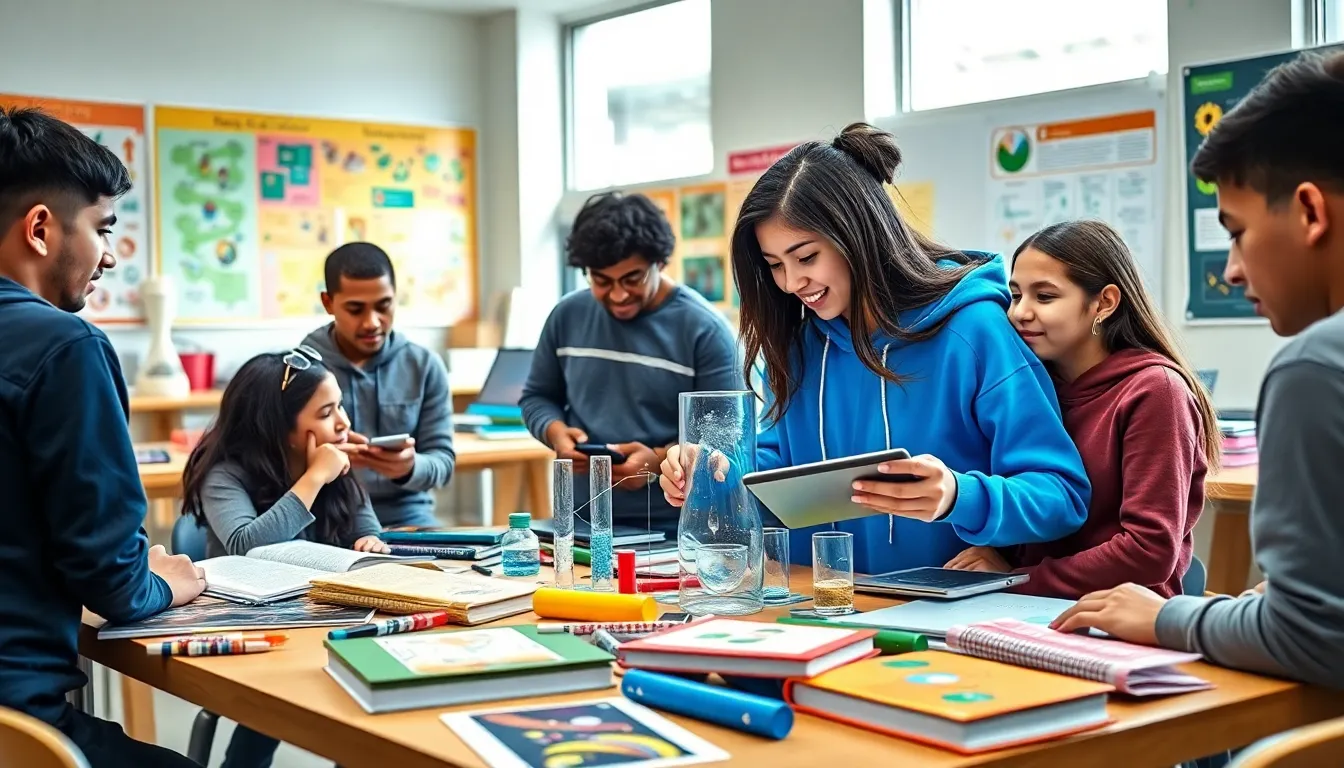In an era where traditional educational models are swiftly evolving, integrated science education emerges as a vital approach aimed at creating a more cohesive learning experience. It not only helps students grasp complex scientific concepts but also nurtures essential skills for real-world applications. This article explores the potential of Redwebzine in enhancing integrated science education, highlighting the role of technology, community engagement, and future directions for this transformative approach.
Table of Contents
ToggleUnderstanding Integrated Science Education

Integrated science education emphasizes the interconnectedness of different scientific disciplines, allowing learners to study biology, chemistry, physics, and environmental science in tandem. By breaking down silos between the subjects, educators can cultivate a more holistic understanding of scientific principles. This approach is crucial for developing critical thinking skills, as it encourages students to analyze problems from multiple perspectives. Early studies show that students engaged in integrated science curricula often demonstrate a higher level of interest and retention in scientific concepts compared to those in traditional settings. Besides, integrated science education promotes inquiry-based learning, where students are encouraged to ask questions, formulate hypotheses, and engage in hands-on experiments, thereby deepening their understanding of scientific inquiry.
The Role of Technology in Education
Technology plays an instrumental role in facilitating integrated science education. With the advent of digital tools, educators are now equipped to provide a richer learning experience through simulations and interactive platforms. Virtual labs, for instance, enable students to conduct experiments that might be too costly or dangerous in a physical setting.
Also, platforms like Redwebzine serve as repositories for educational content, offering multimedia resources such as videos, articles, and interactive modules. These tools not only engage students but also cater to various learning styles, allowing for a personalized educational experience. By harnessing technology, teachers can create immersive environments where integrated science concepts come to life, enhancing students’ understanding and aptitude for science-related topics.
Redwebzine: A New Wave in Educational Media
As an emerging platform, Redwebzine is positioned to reshape how integrated science education is delivered and accessed. This digital magazine focuses on blending various disciplines, showcasing real-world applications of scientific concepts. Redwebzine fosters an ecosystem of collaboration between educators, students, and industry professionals, providing a space where innovative educational practices can flourish.
Benefits of Integrated Science Education
The advantages of integrating science education are manifold. For one, it mirrors the interconnected nature of real-world problems, preparing students for the complexities they will face outside the classroom. Besides, integrated education encourages teamwork and communication among students, essential skills in today’s workforce. Notably, by employing project-based learning, students can tackle significant challenges, applying their knowledge across disciplines and developing solutions that are both practical and innovative.
Challenges and Considerations
But, the implementation of integrated science education is not without its challenges. Curriculum design can be complex, requiring collaboration among educators from specialized fields. There’s also the potential for students to develop gaps in foundational knowledge if not executed correctly. So, ongoing professional development for teachers and continuous curriculum evaluation are vital to ensure that integrated science education effectively meets learning objectives.
Collaboration and Community Engagement
Collaboration among educators, students, and community stakeholders is a critical component of successful integrated science education. Partnerships with local businesses and organizations can enhance learning opportunities, providing students with real-world problems to solve.
Also, community engagement fosters support for educational initiatives and ensures that local contexts are considered in curriculum development. Schools that actively involve parents and community members tend to see increased support for instructional strategies, leading to better overall educational outcomes. Also, collaborative projects can boost students’ motivation and sense of belonging, contributing to a richer learning environment.
Future Directions for Integrated Science Education
Looking ahead, the future of integrated science education appears promising. Advancements in technology will continue to enhance the learning experience, making it more interactive and engaging. Besides, as the job market increasingly favors STEM (science, technology, engineering, and mathematics) skills, educational frameworks must adapt accordingly to prepare students for these opportunities.
Redwebzine and similar platforms have the potential to bridge the gap between education and industry. By curating content that highlights current scientific advancements and career pathways, they can inspire students to explore diverse fields within science. The integration of artificial intelligence and data analytics in education is another frontier, providing personalized learning experiences that cater to the unique needs of each student.
Conclusion
Summarizing, integrated science education stands as a transformative approach that not only enriches students’ understanding of scientific concepts but also prepares them for the complexities of the modern world. Platforms like Redwebzine offer invaluable resources and foster community engagement, paving the way for innovative learning experiences. As technology continues to evolve, the possibilities for enhancing integrated science education are limitless, leaving a lasting impact on future generations of scientists and informed citizens.




